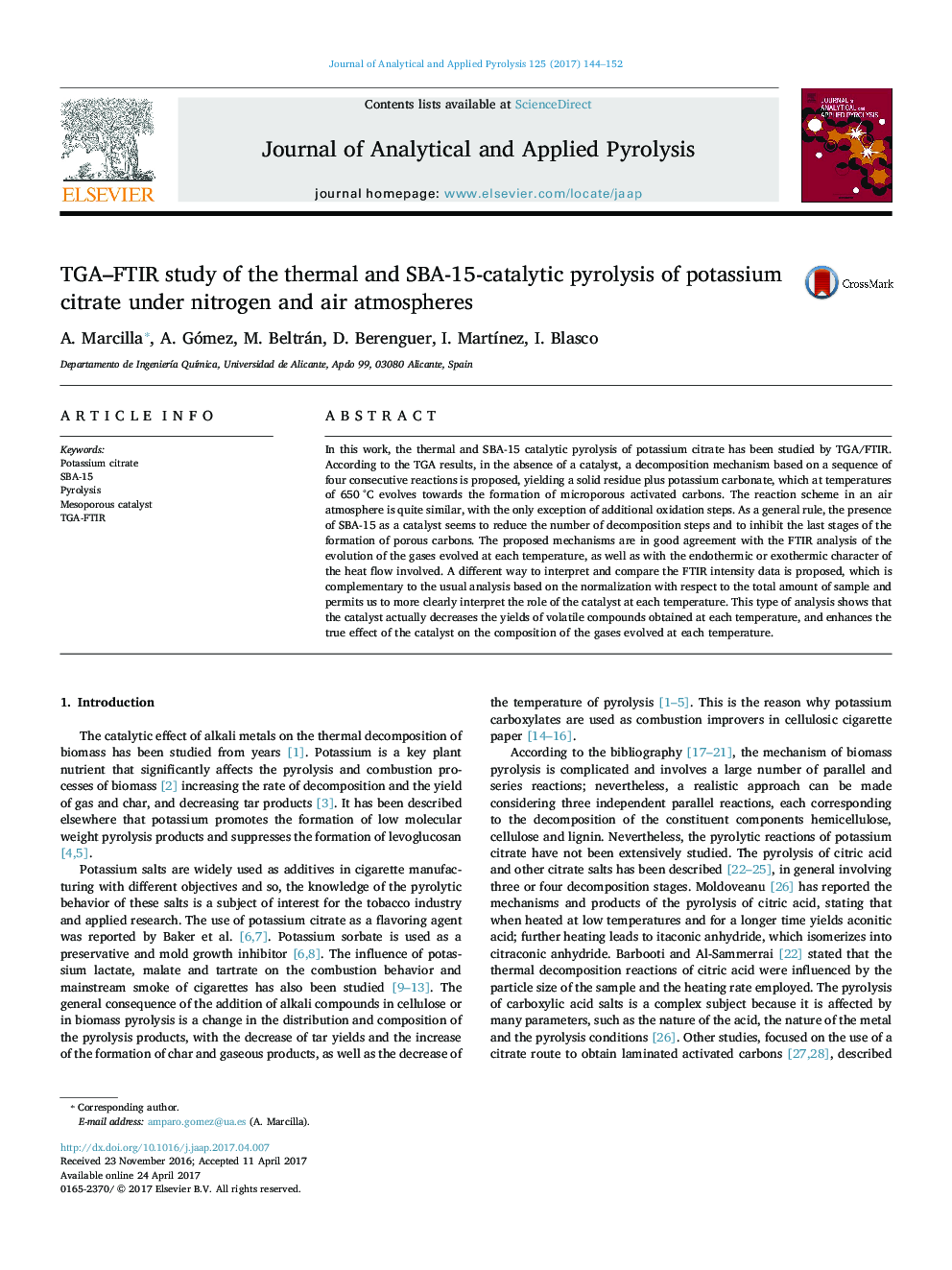| Article ID | Journal | Published Year | Pages | File Type |
|---|---|---|---|---|
| 5134487 | Journal of Analytical and Applied Pyrolysis | 2017 | 9 Pages |
â¢A TGA/FTIR study of potassium citrate with and without SBA-15 has been performed.â¢A decomposition scheme based on 7 reactions is suggested.â¢Additional oxidation steps appear in air atmosphere.â¢The final decomposition step would involve the formation of porous carbons.â¢SBA-15 reduces the number of degradation steps and the yield of volatile compounds.
In this work, the thermal and SBA-15 catalytic pyrolysis of potassium citrate has been studied by TGA/FTIR. According to the TGA results, in the absence of a catalyst, a decomposition mechanism based on a sequence of four consecutive reactions is proposed, yielding a solid residue plus potassium carbonate, which at temperatures of 650 °C evolves towards the formation of microporous activated carbons. The reaction scheme in an air atmosphere is quite similar, with the only exception of additional oxidation steps. As a general rule, the presence of SBA-15 as a catalyst seems to reduce the number of decomposition steps and to inhibit the last stages of the formation of porous carbons. The proposed mechanisms are in good agreement with the FTIR analysis of the evolution of the gases evolved at each temperature, as well as with the endothermic or exothermic character of the heat flow involved. A different way to interpret and compare the FTIR intensity data is proposed, which is complementary to the usual analysis based on the normalization with respect to the total amount of sample and permits us to more clearly interpret the role of the catalyst at each temperature. This type of analysis shows that the catalyst actually decreases the yields of volatile compounds obtained at each temperature, and enhances the true effect of the catalyst on the composition of the gases evolved at each temperature.
